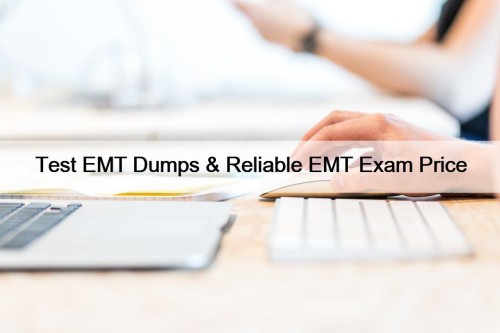Most Popular
 Test EMT Dumps & Reliable EMT Exam Price
Test EMT Dumps & Reliable EMT Exam Price
Pass4sureCert trusts in displacing all the qualms before believing us. ...
 Latest SAA-C03 Test Fee | SAA-C03 Valid Test Pattern
Latest SAA-C03 Test Fee | SAA-C03 Valid Test Pattern
DOWNLOAD the newest SureTorrent SAA-C03 PDF dumps from Cloud Storage ...
 Authoritative Practice Test IAM-Certificate Pdf for Real Exam
Authoritative Practice Test IAM-Certificate Pdf for Real Exam
P.S. Free & New IAM-Certificate dumps are available on Google ...



Latest SAA-C03 Test Fee | SAA-C03 Valid Test Pattern

DOWNLOAD the newest SureTorrent SAA-C03 PDF dumps from Cloud Storage for free: https://drive.google.com/open?id=1vTK4Z-GSf7jPDU5RNe7-0w2q4JvcMV3B
The great reputation of our SAA-C03 study materials has earned the title “the model study material for the test certification” for us. Our assiduous pursuit for high quality of our products creates our top-ranking SAA-C03 study materials and constantly increasing sales volume. Our company has forged a group of professional experts with the excelsior craftsmanship and a mature service system. The quality of our SAA-C03 Study Materials is high because our experts team organizes and compiles them according to the real exam’s needs and has extracted the essence of all of the information about the test.
To prepare for the SAA-C03 exam, candidates can take training courses, attend workshops, and practice using AWS services through hands-on labs and exercises. They can also review AWS documentation and whitepapers, participate in online forums, and join study groups to enhance their knowledge and skills. Passing the SAA-C03 exam requires dedication, effort, and a comprehensive understanding of AWS services and architecture principles.
The Amazon SAA-C03 Exam consists of multiple-choice and multiple-response questions, and the candidate has 130 minutes to complete the test. SAA-C03 exam fee is $150, and the certification is valid for three years. Passing the SAA-C03 exam is a significant achievement and can lead to better career opportunities in the cloud computing industry.
Amazon Latest SAA-C03 Test Fee: AWS Certified Solutions Architect - Associate - SureTorrent 100% Pass Rate Offer
In the era of informational globalization, the world has witnessed climax of science and technology development, and has enjoyed the prosperity of various scientific blooms. In 21st century, every country had entered the period of talent competition, therefore, we must begin to extend our SAA-C03 personal skills, only by this can we become the pioneer among our competitors. At the same time, our competitors are trying to capture every opportunity and get a satisfying job. In this case, we need a professional SAA-C03 Certification, which will help us stand out of the crowd and knock out the door of great company.
Amazon SAA-C03 exam is one of the most sought-after certifications for IT professionals who are interested in cloud computing. AWS Certified Solutions Architect - Associate certification demonstrates a thorough understanding of Amazon Web Services (AWS) and solutions architecture. It is designed to test the candidates’ proficiency in designing and deploying scalable, highly available, and fault-tolerant systems on AWS. SAA-C03 Exam is considered to be quite challenging, and requires extensive preparation and hands-on experience with AWS services.
Amazon AWS Certified Solutions Architect - Associate Sample Questions (Q117-Q122):
NEW QUESTION # 117
[Design Secure Architectures]
A company runs a highly available SFTP service. The SFTP service uses two Amazon EC2 Linux instances that run with elastic IP addresses to accept traffic from trusted IP sources on the internet. The SFTP service is backed by shared storage that is attached to the instances. User accounts are created and managed as Linux users in the SFTP servers.
The company wants a serverless option that provides high IOPS performance and highly configurable security. The company also wants to maintain control over user permissions.
Which solution will meet these requirements?
- A. Create an Amazon S3 bucket with default encryption enabled. Create an AWS Transfer Family SFTP service with a public endpoint that allows only trusted IP addresses. Attach the S3 bucket to the SFTP service endpoint. Grant users access to the SFTP service.
- B. Create an encrypted Amazon Elastic Block Store (Amazon EBS) volume. Create an AWS Transfer Family SFTP service with a public endpoint that allows only trusted IP addresses. Attach the EBS volume to the SFTP service endpoint. Grant users access to the SFTP service.
- C. Create an Amazon S3 bucket with default encryption enabled. Create an AWS Transfer Family SFTP service with a VPC endpoint that has internal access in a private subnet. Attach a security group that allows only trusted IP addresses. Attach the S3 bucket to the SFTP service endpoint. Grant users access to the SFTP service.
- D. Create an encrypted Amazon Elastic File System (Amazon EFS) volume. Create an AWS Transfer Family SFTP service with elastic IP addresses and a VPC endpoint that has internet-facing access. Attach a security group to the endpoint that allows only trusted IP addresses. Attach the EFS volume to the SFTP service endpoint. Grant users access to the SFTP service.
Answer: A
Explanation:
AWS Transfer Family is a secure transfer service that enables you to transfer files into and out of AWS storage services using SFTP, FTPS, FTP, and AS2 protocols. You can use AWS Transfer Family to create an SFTP-enabled server with a public endpoint that allows only trusted IP addresses. You can also attach an Amazon S3 bucket with default encryption enabled to the SFTP service endpoint, which will provide high IOPS performance and highly configurable security for your data at rest. You can also maintain control over user permissions by granting users access to the SFTP service using IAM roles or service-managed identities. Reference: https://docs.aws.amazon.com/transfer/latest/userguide/what-is-aws-transfer-family.htmlhttps://docs.aws.amazon.com/transfer/latest/userguide/create-server-s3.html
NEW QUESTION # 118
A company has a production workload that is spread across different AWS accounts in various AWS Regions.
The company uses AWS Cost Explorer to continuously monitor costs and usage. The company wants to receive notifications when the cost and usage spending of the workload is unusual.
Which combination of steps will meet these requirements? (Select TWO.)
- A. In ys AWS accounts where the production workload is running, create a linked account monitor by using AWS Cost Anomaly Detection in the AWS Cost Management console
- B. In the AWS accounts where the production workload is running, create a linked account budget by using Cost Explorer in the AWS Cost Management console
- C. Create a subscription with the required threshold and notify the company by using weekly summaries.
- D. In the AWS accounts where the production workload is running, create a Cost and Usage Report by using Cost Anomaly Detection in the AWS Cost Management console.
- E. Create a report and send email messages to notify the company on a weekly basis.
Answer: A,C
Explanation:
AWS Cost Anomaly Detection allows you to create monitors that track the cost and usage of your AWS resources and alert you when there is an unusual spending pattern. You can create monitors based on different dimensions, such as AWS services, accounts, tags, or cost categories. You can also create alert subscriptions that notify you by email or Amazon SNS when an anomaly is detected. You can specify the threshold and frequency of the alerts, and choose to receive weekly summaries of your anomalies.
Reference URLs:
1 https://aws.amazon.com/aws-cost-management/aws-cost-anomaly-detection/
2 https://docs.aws.amazon.com/cost-management/latest/userguide/getting-started-ad.html
3 https://docs.aws.amazon.com/cost-management/latest/userguide/manage-ad.html
NEW QUESTION # 119
A company has deployed its application on Amazon EC2 instances with an Amazon RDS database. The company used the principle of least privilege to configure the database access credentials. The company's security team wants to protect the application and the database from SQL injection and other web-based attacks.
Which solution will meet these requirements with the LEAST operational overhead?
- A. Use AWS Network Firewall to protect the application and the database.
- B. Use AWS WAF to protect the application. Use RDS parameter groups to configure the security settings.
- C. Use different database accounts in the application code for different functions. Avoid granting excessive privileges to the database users.
- D. Use security groups and network ACLs to secure the database and application servers.
Answer: B
Explanation:
AWS WAF is a web application firewall that helps protect web applications from common web exploits that could affect application availability, compromise security, or consume excessive resources. AWS WAF allows users to create rules that block, allow, or count web requests based on customizable web security rules. One of the types of rules that can be created is an SQL injection rule, which allows users to specify a list of IP addresses or IP address ranges that they want to allow or block. By using AWS WAF to protect the application, the company can prevent SQL injection and other web-based attacks from reaching the application and the database.
RDS parameter groups are collections of parameters that define how a database instance operates. Users can modify the parameters in a parameter group to change the behavior and performance of the database. By using RDS parameter groups to configure the security settings, the company can enforce best practices such as disabling remote root login, requiring SSL connections, and limiting the maximum number of connections.
The other options are not correct because they do not effectively protect the application and the database from SQL injection and other web-based attacks. Using security groups and network ACLs to secure the database and application servers is not sufficient because they only filter traffic at the network layer, not at the application layer. Using AWS Network Firewall to protect the application and the database is not necessary because it is a stateful firewall service that provides network protection for VPCs, not for individual applications or databases. Using different database accounts in the application code for different functions is a good practice, but it does not prevent SQL injection attacks from exploiting vulnerabilities in the application code.
Reference:
AWS WAF
How AWS WAF works
Working with IP match conditions
Working with DB parameter groups
Amazon RDS security best practices
NEW QUESTION # 120
A company wants to relocate its on-premises MySQL database to AWS. The database accepts regular imports from a client-facing application, which causes a high volume of write operations. The company is concerned that the amount of traffic might be causing performance issues within the application.
- A. Provision an Amazon Elastic File System (Amazon EFS) file system in General Purpose performance mode. Monitor Amazon CloudWatch for IOPS bottlenecks. Change to Provisioned Throughput performance mode if necessary.
- B. Provision an Amazon DocumentDB (with MongoDB compatibility) instance with a memory-optimized instance type. Monitor Amazon CloudWatch for performance-related issues. Change the instance class if necessary.
- C. Provision an Amazon RDS for MySQL DB instance with Provisioned IOPS SSD storage. Monitor write operation metrics by using Amazon CloudWatch. Adjust the provisioned IOPS if necessary.
- D. Provision an Amazon RDS for MySQL DB instance with General Purpose SSD storage. Place an Amazon ElastiCache cluster in front of the DB instance. Configure the application to query ElastiCache instead.
Answer: C
Explanation:
Comprehensive and Detailed Explanation:
For a MySQL database experiencing high write operations, using Amazon RDS with Provisioned IOPS (io1 or io2) SSD storage is recommended to achieve consistent and low-latency performance. Provisioned IOPS allows you to specify a desired IOPS rate, which is crucial for write-intensive workloads.
Monitoring write operation metrics through Amazon CloudWatch enables you to observe performance and adjust the provisioned IOPS as needed to meet application demands.
References:
Modifying settings for Provisioned IOPS SSD storageAWS Documentation
Amazon CloudWatch metrics for Amazon RDSAWS Documentation
NEW QUESTION # 121
A new online banking platform has been re-designed to have a microservices architecture in which complex applications are decomposed into smaller, independent services. The new platform is using Docker considering that application containers are optimal for running small, decoupled services. The new solution should remove the need to provision and manage servers, let you specify and pay for resources per application, and improve security through application isolation by design.
Which of the following is the MOST suitable service to use to migrate this new platform to AWS?
- A. Amazon EKS
- B. Amazon EBS
- C. Amazon EFS
- D. AWS Fargate
Answer: D
Explanation:
AWS Fargate is a serverless compute engine for containers that works with both Amazon Elastic Container Service (ECS) and Amazon Elastic Kubernetes Service (EKS). Fargate makes it easy for you to focus on building your applications. Fargate removes the need to provision and manage servers, lets you specify and pay for resources per application, and improves security through application isolation by design.
Fargate allocates the right amount of compute, eliminating the need to choose instances and scale cluster capacity. You only pay for the resources required to run your containers, so there is no over- provisioning and paying for additional servers. Fargate runs each task or pod in its own kernel providing the tasks and pods their own isolated compute environment. This enables your application to have workload isolation and improved security by design. This is why customers such as Vanguard, Accenture, Foursquare, and Ancestry have chosen to run their mission critical applications on Fargate.


Hence, the correct answer is: AWS Fargate.
Amazon EKS is incorrect because this is more suitable to run the Kubernetes management infrastructure and not Docker. It does not remove the need to provision and manage servers nor let you specify and pay for resources per application, unlike AWS Fargate.
Amazon EFS is incorrect because this is a file system for Linux-based workloads for use with AWS Cloud services and on-premises resources.
Amazon EBS is incorrect because this is primarily used to provide persistent block storage volumes for use with Amazon EC2 instances in the AWS Cloud. References:
https://aws.amazon.com/fargate/
https://docs.aws.amazon.com/AmazonECS/latest/developerguide/ECS_GetStarted_Fargate.html Check out this Amazon ECS Cheat Sheet:
https://tutorialsdojo.com/amazon-elastic-container-service-amazon-ecs/
NEW QUESTION # 122
......
SAA-C03 Valid Test Pattern: https://www.suretorrent.com/SAA-C03-exam-guide-torrent.html
- 100% Pass 2025 Accurate Amazon SAA-C03: Latest AWS Certified Solutions Architect - Associate Test Fee 🐤 Enter ➡ www.prep4away.com ️⬅️ and search for “ SAA-C03 ” to download for free ⏹SAA-C03 Training For Exam
- SAA-C03 Exam Cram 🔨 Valid SAA-C03 Exam Notes 🦧 SAA-C03 Exam Questions Fee 🥠 Easily obtain free download of ⏩ SAA-C03 ⏪ by searching on ▛ www.pdfvce.com ▟ 🕤SAA-C03 Exam Simulator Free
- SAA-C03 Valid Test Materials 🐭 Minimum SAA-C03 Pass Score 🐬 SAA-C03 Valid Test Materials 👿 Easily obtain free download of ➥ SAA-C03 🡄 by searching on [ www.lead1pass.com ] 🤾SAA-C03 Reliable Exam Question
- Valid SAA-C03 Exam Notes 📷 Reliable SAA-C03 Test Tutorial 〰 SAA-C03 Valid Test Materials 📊 Easily obtain { SAA-C03 } for free download through 《 www.pdfvce.com 》 🔅Latest SAA-C03 Test Cost
- SAA-C03 Valid Braindumps Ppt 🛬 SAA-C03 Latest Exam Vce 🦽 SAA-C03 Exam Questions Fee ❔ Simply search for ➡ SAA-C03 ️⬅️ for free download on ☀ www.examcollectionpass.com ️☀️ 🥣SAA-C03 Exam Simulator Free
- High-quality Latest SAA-C03 Test Fee by Pdfvce 🔧 Search for [ SAA-C03 ] and download it for free immediately on ▶ www.pdfvce.com ◀ 👩Test SAA-C03 Answers
- Quiz Amazon - SAA-C03 - AWS Certified Solutions Architect - Associate –High Pass-Rate Latest Test Fee ⏸ Download ⏩ SAA-C03 ⏪ for free by simply entering ▛ www.prep4away.com ▟ website 🐣Valid SAA-C03 Test Prep
- Latest SAA-C03 Test Cost 🚙 SAA-C03 Valid Exam Experience 🥅 Valid Test SAA-C03 Tutorial 🦒 Immediately open ( www.pdfvce.com ) and search for { SAA-C03 } to obtain a free download 🛴SAA-C03 Test Dates
- Minimum SAA-C03 Pass Score 💜 SAA-C03 Training For Exam 🦘 SAA-C03 Valid Test Materials 😀 Search for ➠ SAA-C03 🠰 and download it for free on ☀ www.prep4away.com ️☀️ website 🤛SAA-C03 Exam Questions Fee
- Quiz Amazon - SAA-C03 - AWS Certified Solutions Architect - Associate –High Pass-Rate Latest Test Fee 🦇 Easily obtain ✔ SAA-C03 ️✔️ for free download through { www.pdfvce.com } 🎈SAA-C03 Exam Cram
- AWS Certified Solutions Architect - Associate vce files, valid free Amazon SAA-C03 vce dumps 🐇 Immediately open [ www.pass4leader.com ] and search for ➽ SAA-C03 🢪 to obtain a free download 🐳Test SAA-C03 Answers
- SAA-C03 Exam Questions
- courses.tolulopeoyejide.com infodots.in reselling.thenewsoch.com prominentlearning.xyz wondafund.com growafricaskills.com skill2x.com edfuturetech.com training.onlinesecuritytraining.ca internshub.co.in
P.S. Free 2025 Amazon SAA-C03 dumps are available on Google Drive shared by SureTorrent: https://drive.google.com/open?id=1vTK4Z-GSf7jPDU5RNe7-0w2q4JvcMV3B
Tags: Latest SAA-C03 Test Fee, SAA-C03 Valid Test Pattern, SAA-C03 Dump Check, Valid SAA-C03 Dumps Demo, Latest SAA-C03 Demo